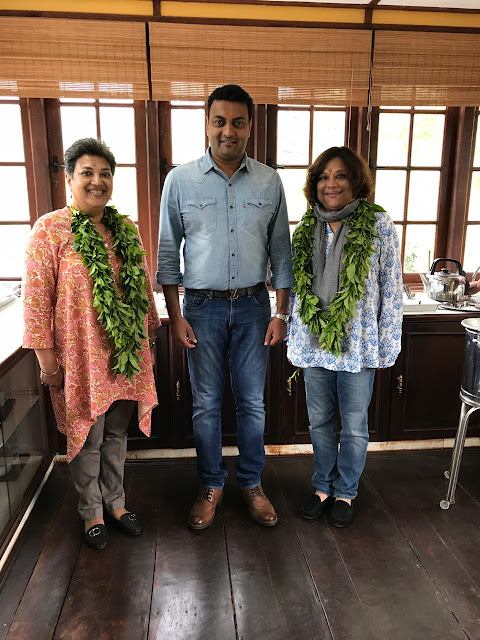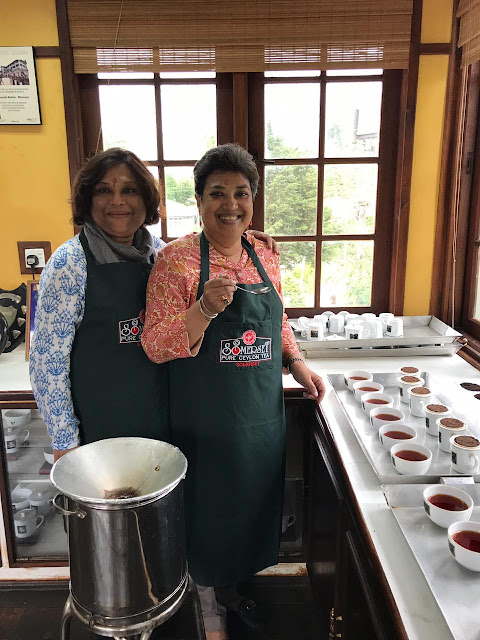"What good is the warmth of summer, without the cold of winter to give it sweetness."
- John Steinbeck
The train huffs and puffs uphill on one of India’s last remaining mountain railroads like a giant worm, trying to find the easiest gradient up the steep slope. For the excited occupants of the train, it's the key to unlocking a hidden world of unparalleled beauty as the train journeys on through tunnels, twists and turns around the hills, crossing high arch bridges and overlooking some of the most spectacular scenery as the Nilgiri Hills rise over the plains of Coimbatore.
Runnymede, Wellington, Hill Grove, Adderley: exotic names of stations pass by as the train reaches its destination, the town of Ooty, at 7200 feet above sea level. These ancient mountains span approximately 3900 square kilometers, and being blessed with a considerably cooler climate than the surrounding plains, the slopes are dotted with tea fields and vegetable gardens.
Imagine these magnificent mountains being split by a smaller but higher mountain range running from northwest to southeast, with the escarpment overlooking the much gentler hills of Wayanad and the Bandipur, Mudumalai National parks on the northwestern edge.Towards the southeastern side they give way to the Palghat pass.
This mountain range rises up to 8,600 feet above sea level and has a stunningly beautiful landscape with lofty peaks and undulating grasslands interspersed with islands of jungles within its folds along the valleys. Wildlife thrives abundantly here especially in the Mukurthi National park (78 Sq.Kms) and its buffer areas. A handful of estates with their tea fields situated between 7500 feet and 8100 feet above sea level in this part of Upper Nilgiris border the Mukurthi National Park producing some of India’s finest high grown teas.
These estates are unique even to the rest of the Nilgiris as they have very different vegetation and weather. The high mountains trap the monsoon clouds and prevent them from reaching the interiors of the peninsula and these grasslands, acting much like a giant sponge, absorb the torrential rains during the monsoons and release the water in the ensuing drier seasons. Along with the Mukurthi National Park, the area forms an important catchment area for three major districts of Tamil Nadu. The Bhavani river, a major tributary of the Cauvery River, originates here.
The landscape within the estates is remarkably unique with giant Blue Gum trees ( Eucalyptus globulus ), varieties of wattle (Acacia decurrens and Acacia melanoxlyn ) and evergreen pine trees ( Pinus pinata ) punctuating the tea fields and grasslands. These trees are not native to the land and are introduced species.
These highlands are sparsely inhabited except for the odd Toda tribal settlements. The Todas are the original inhabitants of this land and are nomadic cattle grazers.
As the northeast monsoon recedes and December approaches, there is a noticeable shift in the weather as the days become clearer and the nights colder. A truly Christmassy feeling descends, accentuated by the biting cold as the mercury dips to below zero.
The bungalow fireplaces begin to crackle, as the pine and eucalyptus logs blaze merrily.
 |
| The fireplace at my bungalow |
The day times are pronounced by the sharp sun, clear cloudless skies and relatively high temperatures reaching 25-degree centigrade. By evening the mercury dips sharply going below zero and by early morning the freezing temperatures result in frost with the tea and the grasslands in the valleys covered with frost.
 |
| Frost hit grasslands |
 |
| Frost hit tea bushes. Photo taken in early morning |
The warmer the mornings, the colder the night, a phenomenon which confounds many a new visitor to these estates.
The sub-zero temperatures bring the growth to a grinding halt and crops come crashing into double-digit yield figures for the month. Unlike in the North Indian estates, where there is no plucking during the winter months, in these estates, the winter is when the quality season starts. The freezing cold temperatures along with the slow growth concentrates the enzymes in the tea shoots thereby giving the tea a rare winter character much sought out by the connoisseurs.
Meanwhile, at the Estate Office, frantic emails (letters in the olden days) are exchanged with the Group Office / Head Office giving details of the affected area, anticipated crop loss etc. The same dominate the discussions in the evening at the club bar.
The vegetation changes dramatically with the grass turning into a scorched dry yellow, making it the ideal time to spot herbivores. Sizeable herds of Sambar deer and Indian Gaur congregate together to graze on the remaining patches of vegetation on the slopes beyond the reach of frost.
It’s also the time when the Rhododendron trees (rhododendron arboretum, subsp. nilagiricum) begin to bloom. These trees are as ancient as these mountains and are endemic to the Western Ghats. The jungle pockets light up with their crimson red, bell-shaped flowers in winter.
Sambar stags sport impressive antlers as they vie for the right to mate with the does. Young bucks spar among themselves as curious does watch from the side. The stags generally shed their antlers in the summer and are fully re-grown by winter.
 |
| A Sambar stag at Korakundah Tea Estate |
The cold icy waters are ideal for Rainbow Trout. Introduced to these waters by the sport-loving British, the trout thrive in these protected waters inside the estates. With the advent of the cold weather, the trout start to swim upstream in search of new spawning grounds. The female trout digs a nest with her tail in the sand among shallow waters. These nests are called “redds”. The female then lays her eggs in them, while the males follow to fertilize them.
Among the avifauna, the most interesting winter visitors to these hills are the Wagtails. The Grey Wagtail migrates all the way from Central Asia for the winter. Just as the arrival of the Wagtails seems to indicate winter is near, their disappearance is a sign that winter is over.
The winters in these hills are witness to some of the most breathtaking sunrises and sunsets. It’s worth getting up at dawn, braving the frosty winter chill to witness a sunrise. The sky in the opposite direction is still dark, but in the east, a mixture of yellow and orange appears on the horizon as the dark ocean of night begins to evaporate. Against a silhouette of mountains and trees that appear as shadows, the sun slowly peeks over the horizon. The sky changes colors rapidly, first into a hue of pink and then as the sun like golden ball ascends slowly, the sky finally becomes deep neon blue as its rays reach further out.
 |
| A winter sunrise in the Upper Nilgiris |
 |
| A star spangled sky on a winter’s night in the Upper Nilgiris. Photo credit Mr.G.B.Henriksen |
As March approaches, the planters and the bushes anxiously await the rains. With the heralding of the first summer showers, the rains appear to breathe new life into the seemingly moribund frost affected tea bushes. Fresh buds sprout from the bare frames and life begins anew. The bushes seem reborn and the circle of life repeats.
Probably, a fitting paradigm to the industry, which has seen tough times, but has ridden these tough times and has flourished time after time.
Meet the writer: Rajesh Thomas
Rajesh is a second generation planter who was born and brought up in the planting districts of Southern India. Don't miss out on his earlier stories - Click on this link to read them: https://teastorytellers.blogspot.com/search/label/J.Rajesh%20Thomas
You will meet many storytellers here at Indian Chai Stories, and they are almost all from the world of tea gardens: planters, memsaabs, baby and baba log. Each of our contributors has a really good story to tell - don't lose any time before you start reading them!
Do you have a chai story of your own to share? Send it to me here, please : indianchaistories@gmail.com. My name is Gowri Mohanakrishnan and I'm a tea planter's wife. I started this blog because one of the things that I wouldn't want us to lose in a fast changing world is the tea story - a story always told with great seriousness, no matter how funny - always true (always), maybe a tall tale, long, or short, impossible, scary, funny or exciting but never dull.
You will find yourself transported to another world! Happy reading! Cheers to the spirit of Indian Tea!
ADD THIS LINK TO YOUR FAVOURITES : https://teastorytellers.blogspot.com/Indian Chai Stories













